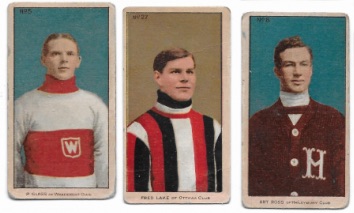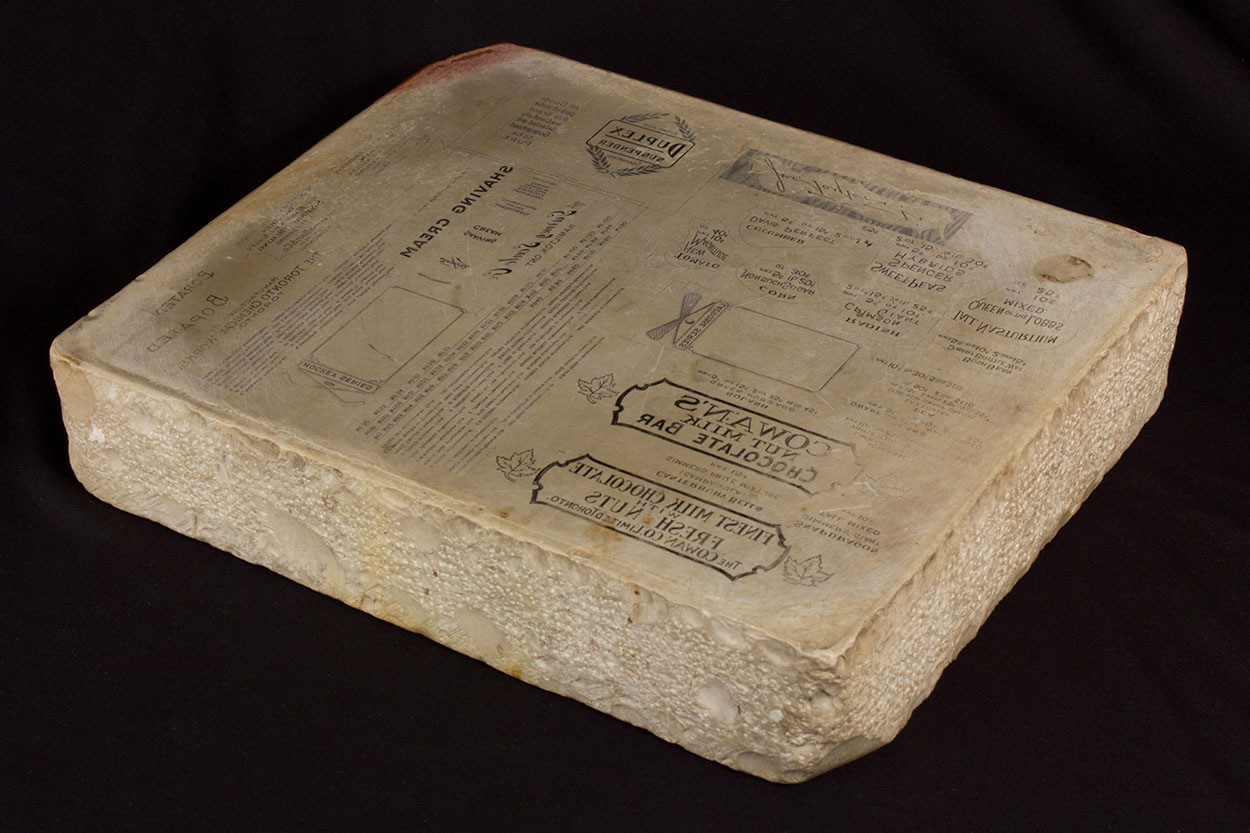|
|
|
|
#1
|
||||
|
||||
|
Quote:
Edited to add I could be wrong but the way I read it American Lithograph bought the patent so they may have been the only ones using this type of press for years later. Last edited by Pat R; 11-01-2021 at 12:18 PM. Reason: added info |
|
#2
|
|||
|
|||
|
American Lithograph could have bought that to use it, or to deny it to competitors.
Lithography to me means printing from a stone. Smooth, polished flat surface. Wax, fat or oil is placed where they wanted the stone to remain, and then an acid on all of it eats away the unwaxed surface, then it's all cleaned. What's left is a stone plate. I am unsure of the timing, but I think in the late 1800s they got away from stones and started using metal plates. That sheet that depicts rollers, with faces across the middle one, has the word 'transfer' in the caption. Transfer rollers could have been getting their ink from a stone, or a metal plate. Old school lithography is a work of beauty, it's art. Until lithography came along, anyone with art on their walls would have had original art. Currier and Ives is a name some of us recognize. That's because they got art, lithographic art, into the homes of their subscribers and patrons. They could print that horse drawn sleigh hauling a happy family across a snow covered bridge and lane and through the woods on their way to grandmother's house. All of these little cards we collect were, and ARE, works of art. |
|
#3
|
||||
|
||||
|
Quote:
|
|
#4
|
||||
|
||||
|
It's interesting that the Americans were using rollers to make their tobacco cards, such as the T206s. In Canada, stone lithography was used to make the first hockey cards. Below is a picture of the C56 cards - the first hockey set issued here in Canada:
 And do you guys want to know something crazy? One of the actual stones that was used to manufacture these cards was discovered here recently! Here it is:  I don't think anyone knows the name of the company that was hired by Imperial Tobacco Ltd. to make these cards, but they were also doing things for other companies as well. |
|
#5
|
|||
|
|||
|
Quote:
|
|
#6
|
||||
|
||||
|
Quote:
If it is wouldn't it be possible to combine 4 large master stones and print one big sheet with it? For instance because piedmont was their biggest brand couldn't they print them on a larger sheet like all 4 of these plate scratch sheets and then print sheet 1b for the SC150/649's on a smaller press. [IMG]  [/IMG] [/IMG]
|
|
#7
|
|||
|
|||
|
That's pretty close.
For the hockey card, they obviously made single transfers to lay out the plate. And that sheet may have been fairly small. The T220 silver uncut panels make me think those were done using a larger transfer. Given that the alignment marks are only seen in a couple spots out of all the edge pieces, they either used larger transfers, or erased most of the alignment marks. The T206 proofs if I remember them right all have alignment marks on each card. But a large master and a large transfer could have been made The press in the patent seems to only do single sheets, but with multiples on the impression cylinder all at once. The Brett press may have been web fed, since the requirement for materials for the silks was X yards of 24" wide fabric. That opens up a whole new batch of possibilities, like a "sheet" that was a more or less continuous strip of cards, as the plate could have wrapped almost completely around the roller. (some stamps were done on rotary presses that used two plates and the only gap was a pair of lines 180 degrees apart, or one every so many stamps. ) Rotary presses were/are also so much faster that a very large plate might not have been needed. |
|
#8
|
|||
|
|||
|
Quote:
There are/were some proofing presses that still do that, as well as a few places that print art. Later flatbed presses were offset lithography, where the stone was inked, and transferred the image onto a rubber roller that transferred the image to the paper. The stones for that needed non-reversed images. And the way they were laid out was interesting. a smaller stone had the master image, and it was wet and inked with a very thick tarlike ink. That was printed onto basically tissue paper, making a transfer. Similar to the early 60's Topps iron on transfers. Those transfers were applied to the stone, and then the thin paper was removed using some solvent. Once they were all down, the etching process went on as usual. "Modern" presses were also offset, but the plates were thin aluminum coated with a limestone like surface. That had a thin wax layer that was light sensitive so they could be exposed using a photographic negative, than developed, in the etching process. There are newer versions that computer generate the plates on the press. I've read a bit about them, but haven't seen one in person. |
|
#9
|
|||
|
|||
|
This patent and the press Brett was apparently using fall in between the 1875 rotary offset presses that used cardboard as the offset mat, and Rubels 1901 press.
https://www.aptpressdirect.com/blog/...printing-press This press is using a solid roller as the plate, and arranging multiple watering/inking systems around a fairly large central cylinder that the paper travels on. Each inking station has it's own "plate" and prints a different color. Very similar to a non- lithographic press Hoe made back in the mid 1800's https://en.wikipedia.org/wiki/Rotary_printing_press As a practical arrangement, making adjustments etc to more than 2-3 inking stations would be a challenge, and those adjustments in inking and watering are usually made while the press is running. Which would make more than 2-3 stations more than a bit dangerous. Newer multi color presses are pretty much just multiple regular presses built on the same frame so the paper goes into each one sequentially. Even then the operator sometimes has to reach between two somewhat closely spaced running presses to adjust things. https://www.youtube.com/watch?v=EhPgr6nIgJ0&t=3s These setups can be something like 10 colors. |
 |
|
|
 Similar Threads
Similar Threads
|
||||
| Thread | Thread Starter | Forum | Replies | Last Post |
| American Lithographic Journals | GasHouseGang | Boxing / Wrestling Cards & Memorabilia Forum | 2 | 05-22-2020 12:31 PM |
| FS: Pile of Books to Read, Yes Read - SOLD | quinnsryche | Baseball Memorabilia B/S/T | 1 | 10-30-2018 02:23 PM |
| American Lithographic (ALC) Ledger Notes | Craig M | Net54baseball Vintage (WWII & Older) Baseball Cards & New Member Introductions | 4 | 04-06-2013 04:24 PM |
| American Lithographic Company Article | mkdltn | Net54baseball Vintage (WWII & Older) Baseball Cards & New Member Introductions | 2 | 07-20-2010 06:54 AM |
| The Ugly Side of AMerican Lithographic | toppcat | Net54baseball Vintage (WWII & Older) Baseball Cards & New Member Introductions | 14 | 02-18-2010 09:09 PM |